This is part 1 of my Bogotá Fashion Week experience where I had the honor of joining four conversations with creatives I deeply admire, an opportunity of a lifetime made possible by Latinness🙏🏾❤️
Next week I’ll bring my favorite runway looks, Colombian designers you should be paying attention to, and four items I brought back home.
MONDAY. Bogotá Fashion Week began with a lovely event—one of those I thought only existed within the confines of Instagram. The kind where you’re loaned a full look from a brand, where white swan-shaped meringues are served, and decadent velvety flowers are arranged on a perfectly set table, toile du jour as the backdrop.
But I was late. I had been talking to Oriana, the woman who cooks and cleans at my friend’s apartment, where I stayed the night I arrived in Bogotá, before moving to the official Bogotá Fashion Week hotel.
I had just finished my cheese arepa, lost in Oriana’s stories, in the smell of her coffee, when Claudia, my friend’s manicurist who came to do my nails, swept into the apartment carrying all her implements—apologetic for her tardiness, in perfectly done hair and makeup, rushed and exhausted from the traffic caused by street protests.
When I asked what the protests were about, she said she didn’t know—just that they were supposed to fight for people like her. Abstract people, whose rights exist only in political speeches and IG captions, for whom a 40-minute commute had now become a two hour one. Her eyes rolling unimpressed by the irony.
My nails were done, but even after waiting the required 10 minutes, I still managed to ruin them. I had to get going.
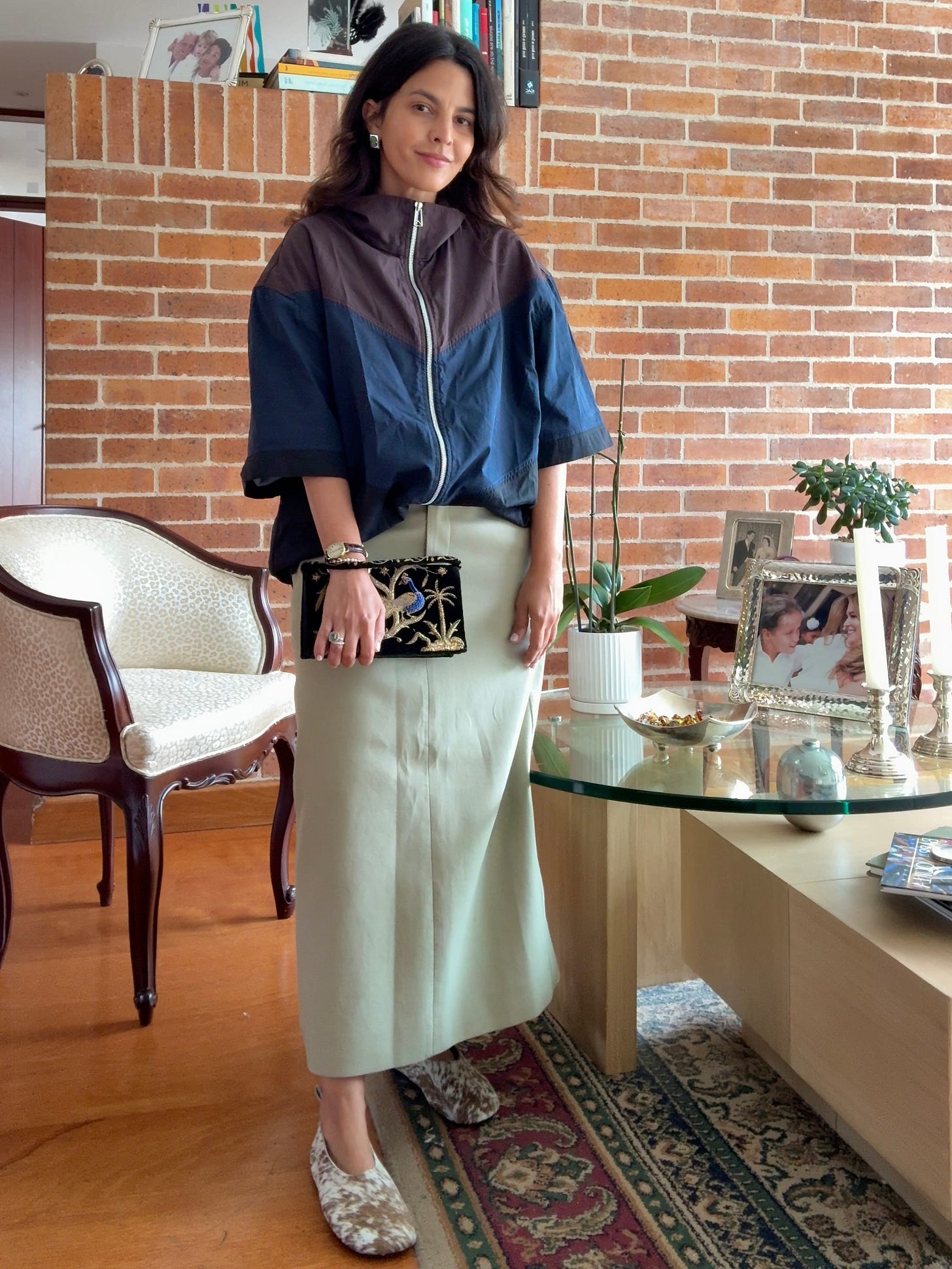
On my way to the event, I read that Oliver Church article on 1 Granary and immediately DMed my friend Nicole: How do we make fashion exclusive yet not elitist? Luxurious yet accessible? Perhaps we need to reframe what luxe even means?
The questions Nicole and I go in circles about.
I finally arrived at the event, and I saw, first hand, the wheels of the industry turning. Fashion was there—not just in the designers recording content, but in the videographer holding the cameras, the stylists helping guests pick their looks from racks of clothes, the tailors altering pieces, the photographers capturing the subtlety of a hand brushing against fabric, the caterers who made the swan meringues, the florists arranging the exotic blooms and the pears and the apples, the woman in the lobby who took my payment for a blazer I didn’t want to just borrow, but keep in my closet forever even though Tallahassee weather isn’t exactly suited for thick virgin wool. It was perfect for Bogota, thought. For a life I don’t have. For a moment that felt like it could last forever.
I thought of all the families who benefit from events like this.
Of course it was raining at the end of the event (I’ve never been to London but this is how I imagine its weather) and I didn’t have an umbrella. A young woman with a platinum pixie cut— like the one I had in my twenties— noticed me looking worried about the borrowed clothes and the blazer I had just bought. The clothing covers were not waterproof, but she kindly walked me through the storm, under her umbrella, until both the clothes and I were safe under an Uber roof.
That night, I attended Jorge Duque’s inaugural show. It was raining again when the show ended, and while waiting for yet another canceled Uber, I saw the same pixie-haired young woman from that morning.
Except, this time, she didn’t have to walk me through the storm: i was prepared. Wearing a waterproof Calvin Klein Raf’s era parka. Just in case no one was there to save me. Just in case I had to face the storm on my own.
TUESDAY. I went to Vanessa Rosales’ talk with Jorge Duque, whom was wearing a pair of Diesel jeans. Nothing more Colombian than wearing Diesel jeans.
I collected the following words from their conversation:
Acervo
Sustrato
Alquimia
Metabolismo creativo
Ensoñación
Goce de la superficialidad
Impronta
Protésico
Cosmética
Transeúnte
Materialidad
That morning, I had my first talk. I wanted to wear leggings under my skirt, something I’ve screenshotted from Véronique Tristam countless times. But just before leaving my hotel room, I changed my mind.
When I arrived, Kika Vargas (one of my style icons, participating in the panel I was moderating (pinch me)) was wearing leggings underneath her skirt.
I felt a wave of frustration at missing the chance to connect through such a small stylistic coincidence. But I quickly realized that connecting through fashion choices is way less important than connecting through conversation. Through words. Through a willingness to listen.
Isn’t that what we’re all looking for?
Later that day, I attended a panel with Eva Hughes (former Vogue Mexico & Latin America editor-in-chief) and Irma Martinez— the stylist, the trailblazer, the institution.
Something Irma said pierced my soul: not everyone needs to be huge. International. Global. There’s wisdom in knowing when to stop growing. That local is also fine. She mentioned not regretting rejecting a big Hollywood styling job to stay in Miami with her kids. She mentioned Colombian designer Ketty Tinoco who chose to stay small in her beautiful Cartagena store, a deliberate decision when so many Colombian designers are on Moda Operandi and Bergordf Goodman. She reiterated how for Ketty, staying small was not a lack of ambition, but a profound understanding of what worked for her. Of self-worth without external validation. The courage in recalibrating what’s real—for a brand, for a business, for a person.
In a world of constant manifesting and go big or go home, Irma offered another way. Not unlike what Byung-Chul Han suggests in his writing.
Only Irma did it in a language everyone could understand, with a perfect tan, in fabulous suede Chanel boots.
WEDNESDAY. Terracotta water started gushing from the faucet just as I was showering to head to my next 2 talks. Muddy drops splashed violently against the walls. I rushed out in my robe to call the lobby, afraid I wouldn’t make it. Clean, at least. That I wouldn’t have time to return the look I borrowed at the event and couldn’t even wore.
Julio from maintenance came and fixed it in 5 minutes.
I got ready in 2.
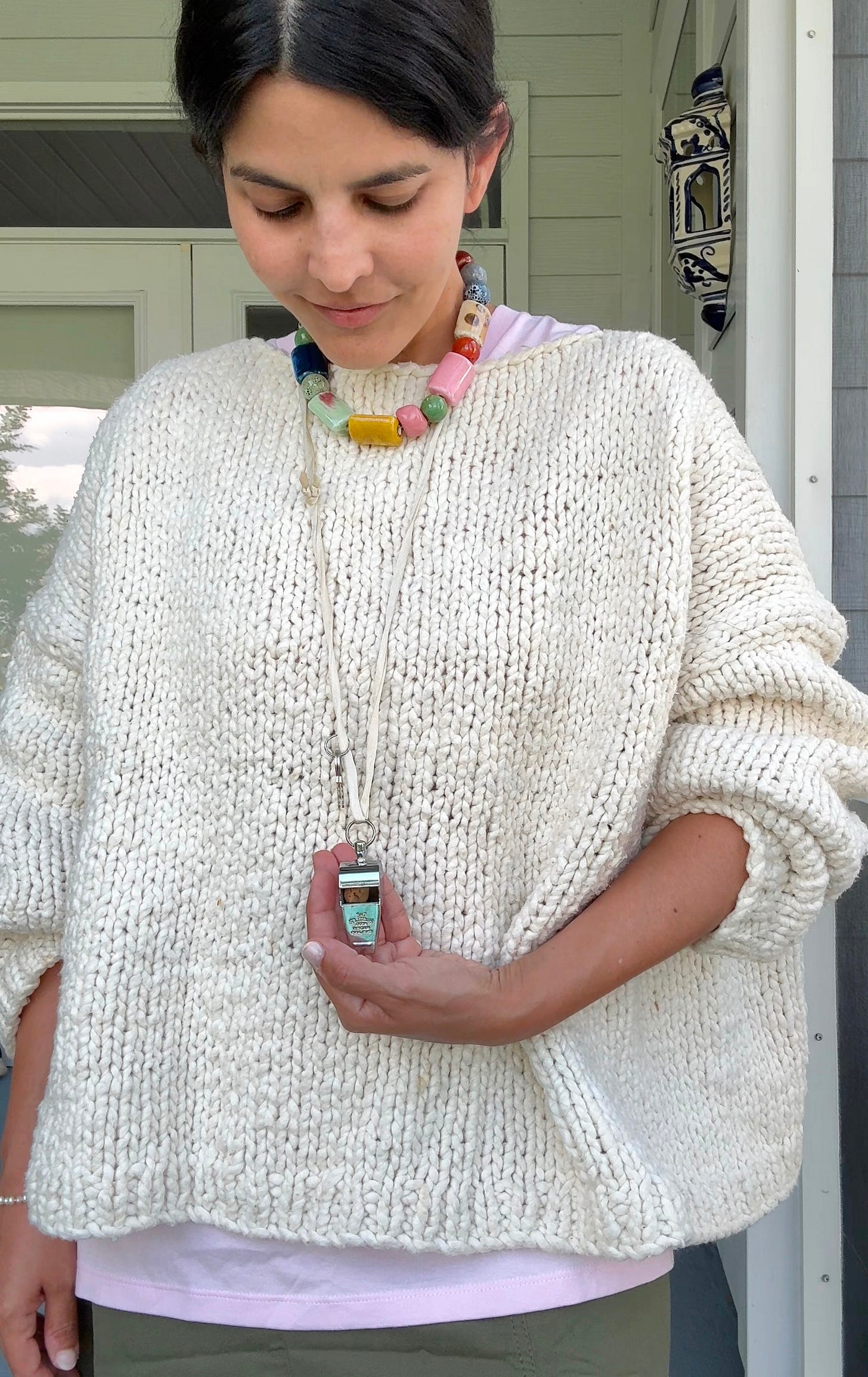
The talks went better than I imagined. It felt good to speak without inner translation. Unself-consciously. Alongside people I admire and respect: anthropologist/designer/artist Miguel Mesa Posada, CD/founder Ricardo Ballen, goldsmith/designer/founder Omar Hurtado, architect/editor Ana María Fries, founder/content creator Marcela García, CD/editor/designer Ana Beliza Mercado.
3 out of 4 talks done—I was able to sit, relax, and just watch the crowd. At some point, though, sensory overload. I started missing whatever message people were trying to communicate through their elaborate street style outfits. I felt a momentary relief from basic jeans and t-shirts. Maybe that’s why those who live in fashion environments tend to dress simply. In uniforms.
Still, I found glimpses of Bogotá’s idiosyncratic style: closed-toe shoes for what they consider cold weather but felt more like a mild fall day in New York. The hats, the ruanas, the layers.
Dark clothes for the night. Noted.
THURSDAY. I heard Rocío Arias Hofman speak about art’s eternity versus fashion’s fleeting nature—and about how appropriation has existed forever: between Greeks and Romans, between Byzantines and Ottomans, between Indigenous communities who’ve seen each others’ mochilas sell better than their own and adopt the other’s color and motifs.
Still, she argued, there’s a right way to do appropriation.
Ana González Rojas proposed collaborations between brands and artisans that go beyond good intentions and profit—rooted in research, reciprocity, and giving back: to the earth, to Indigenous communities, to those outside dominant power structures. Lifting each other up, not in a paternalistic way, but horizontally. It echoed what I’d tried to say in my own talk on tradition the day before.
Rocío seemed genuinely hopeful about the future—about possibility, including what the digital world might offer. Her attitude and intellectual unpretentiousness felt like a breath of fresh air.
That afternoon, I gave my last talk. 4/4. It was on new media, with a a longtime idol: El Fashion Memo. Beautifully moderated by
.i talked about this newsletter. The message was nothing new: I care more about connection than numbers. I’m aware of the privilege of not needing to make a living from this creative project but respect/admire those who do. I’m committed to protecting this space from outside pressures—money, metrics, success that isn’t in my own terms—in order to preserve my creative freedom.

Post-data
I saw magnolias in Bogotá—a flower I thought only grew in the US South where I live. Like when I used to think Colombians invented arepas or that we had the most beautiful anthem in the world. Living in my bubble, oblivious to all the wonders that exist beyond the edges of my limited circle. A failure of imagination.
As if magnolias needed permission to bloom wherever they’re planted. As if they belonged to just one place.
I thought I came to Bogotá for the shows, the clothes, the scene—for the panels I’d rehearsed so many times in the shower. And I found all of that. But once again, what stayed with me wasn’t center stage. It was what unfolded through the cracks. At the edges.
In the rain-soaked streets where my Céline heels got wet.
In the Latinness team, who brought us warm coffee and fresh water before every talk.
In Julio’s navy overalls, the ones he wore to fix the shower leaking muddy terracotta water.
In Claudia’s faux leather boots clicking across the wooden floors of my friend’s apartment.
In the way Oriana wore crocs and socks while telling me how she fled Colombia in the early 2000s, when paramilitaries came to her town with kill lists in hand. How she grabbed her kids, stuffed clothes into plastic bags, and crossed to Venezuela—the land of opportunity back then. How she returned years later, once Venezuela collapsed, to work for a family who kept a separate set of china for their employees.
—
Fashion lives in the periphery. In Bogotá, whether or not it’s called a fashion capital.
In Martine Rose’s collections, whether or not she becomes the creative director of Balenciaga.
In Ketty Tinoco’s designs, whether or not they ever hang in a Paris showroom.
Maybe that’s what Irma Martínez was getting at: that we don’t have to go big to matter. To move people. To make a difference.





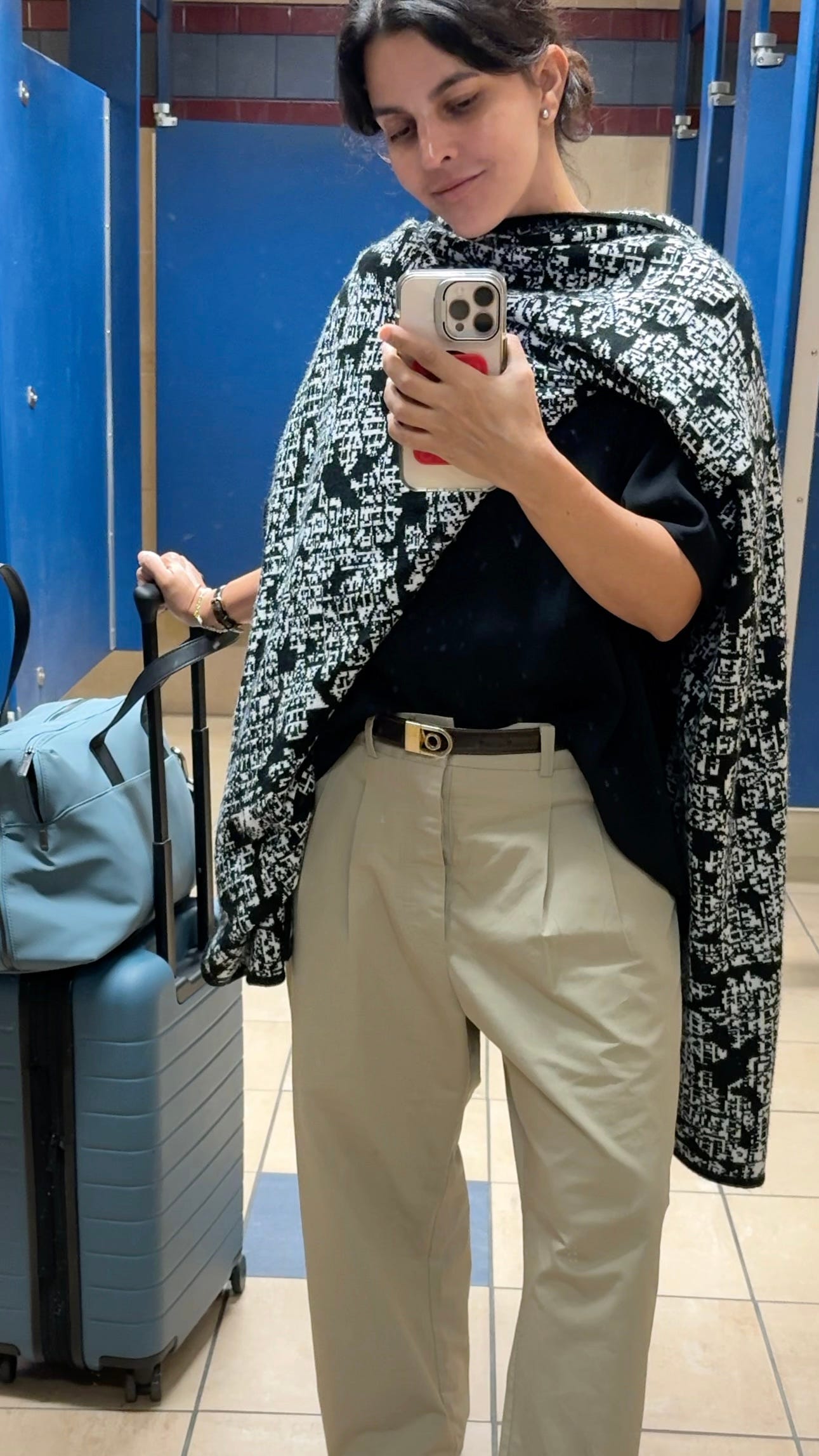
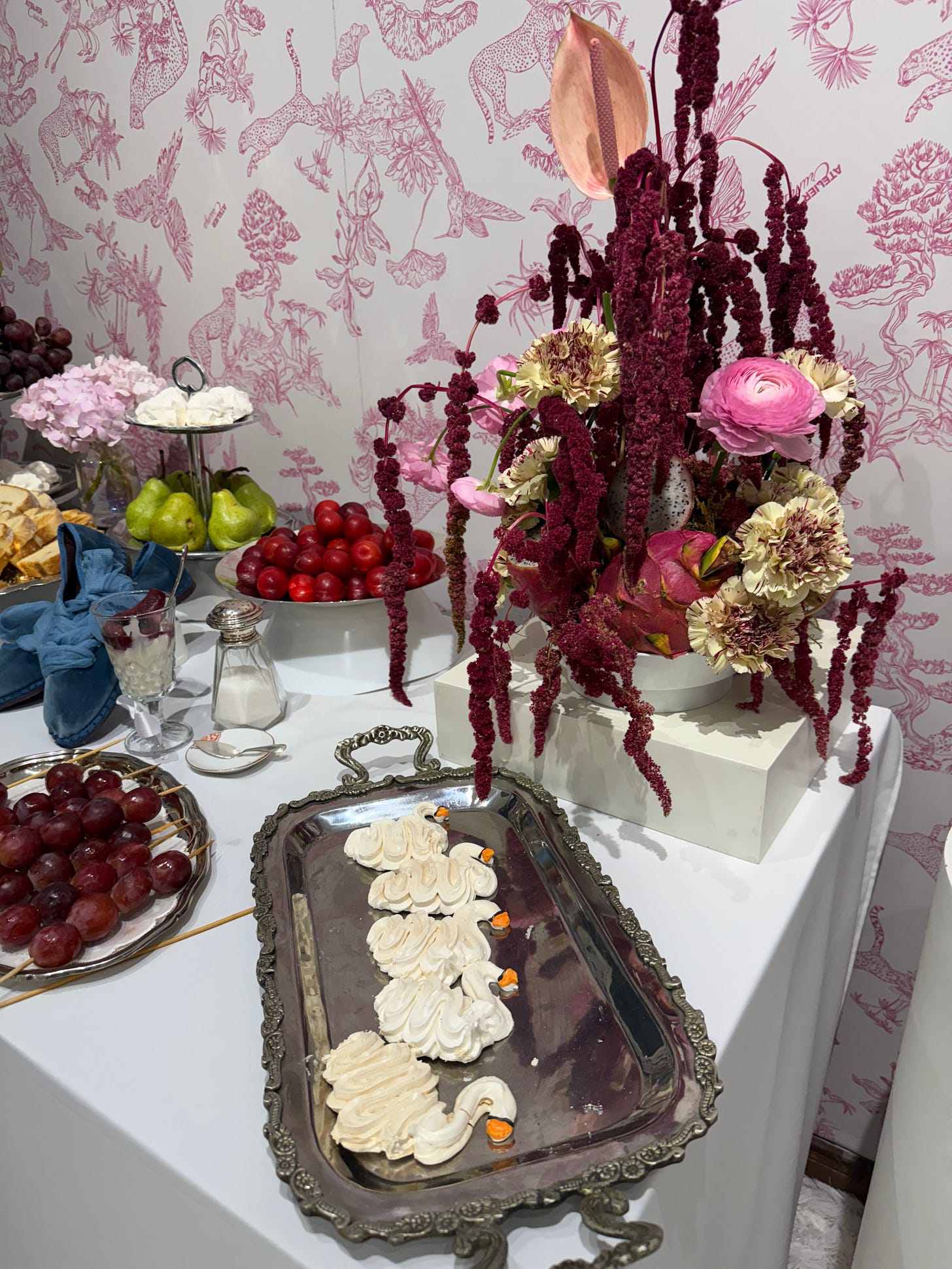


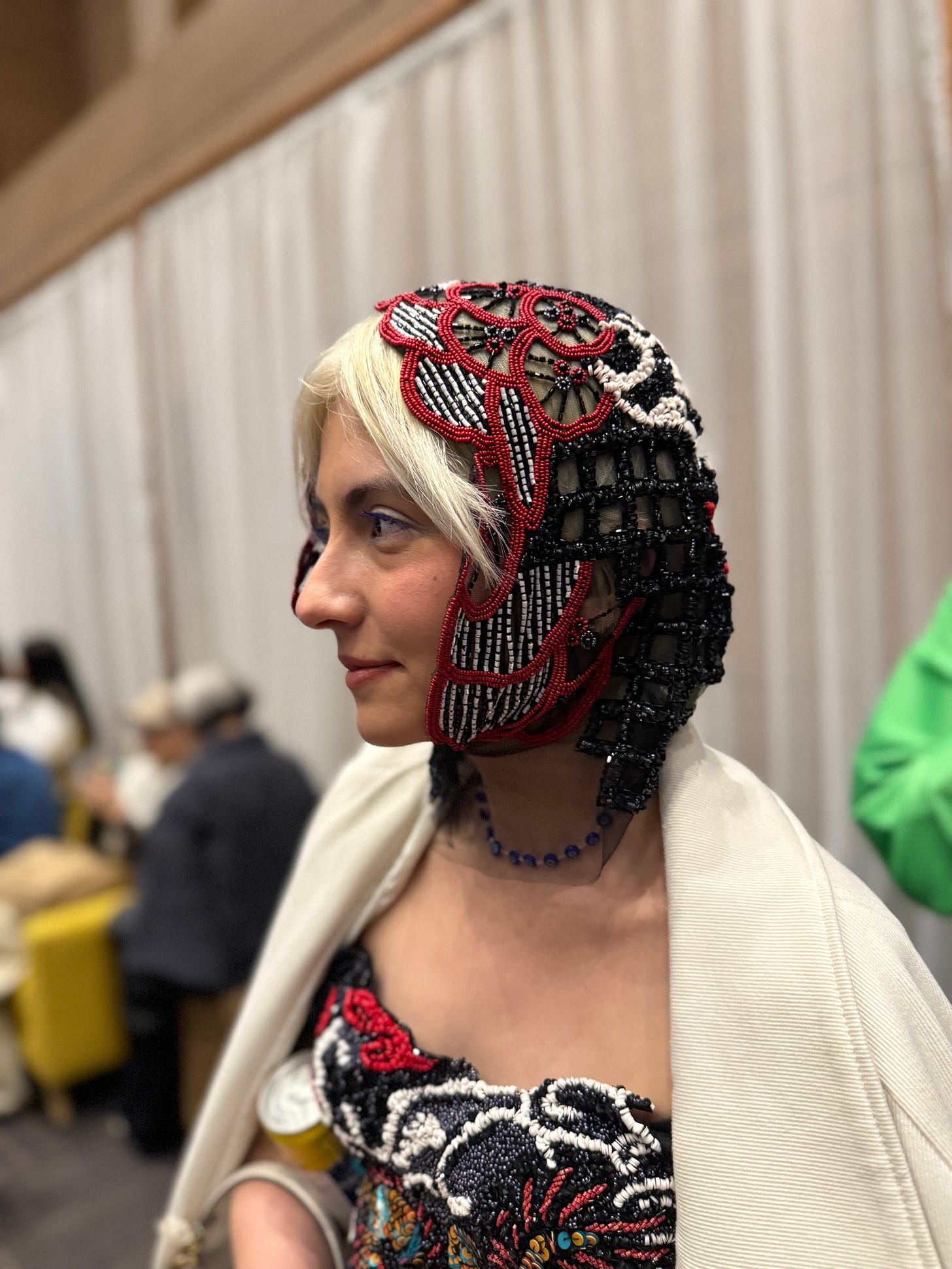

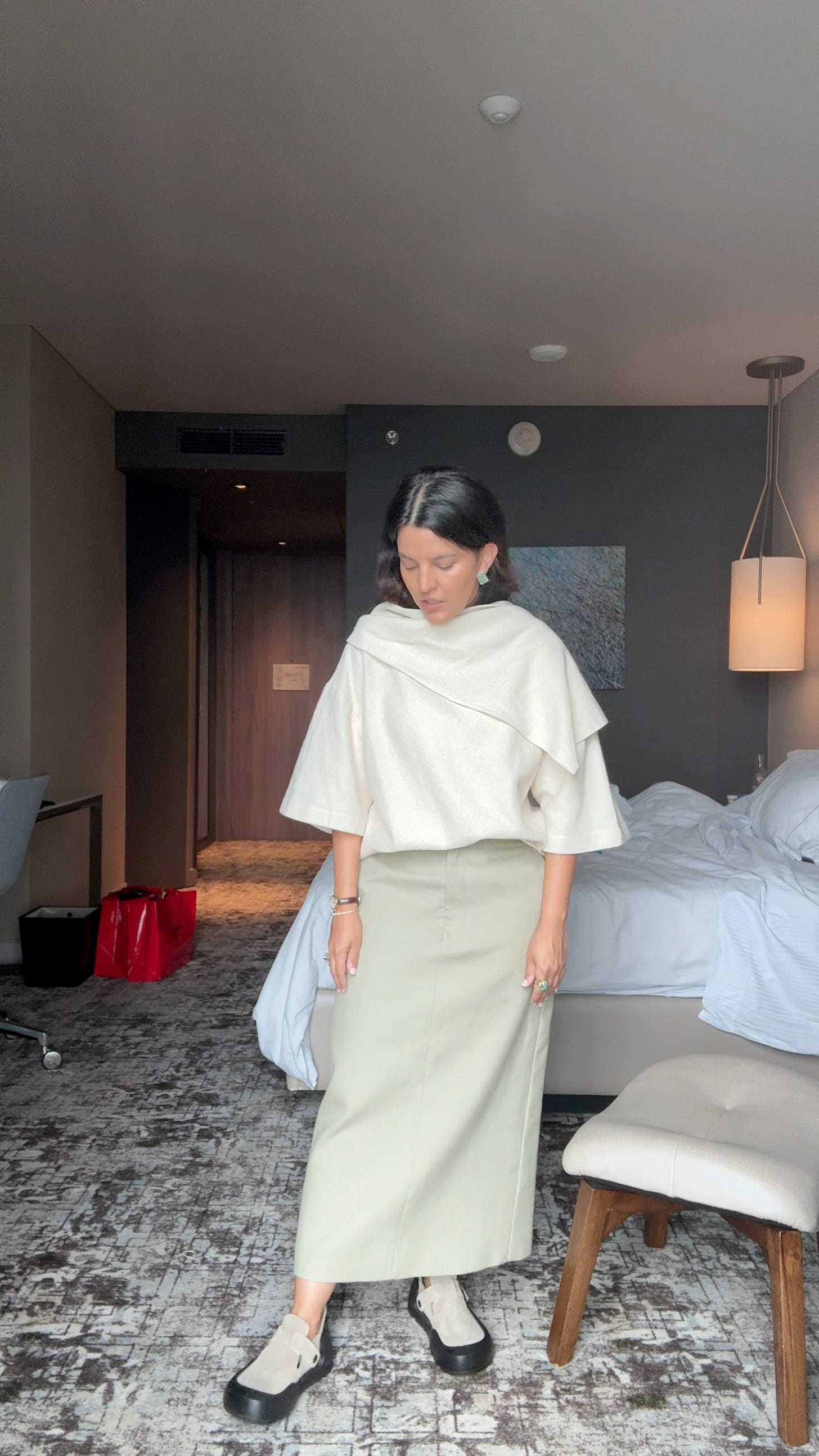
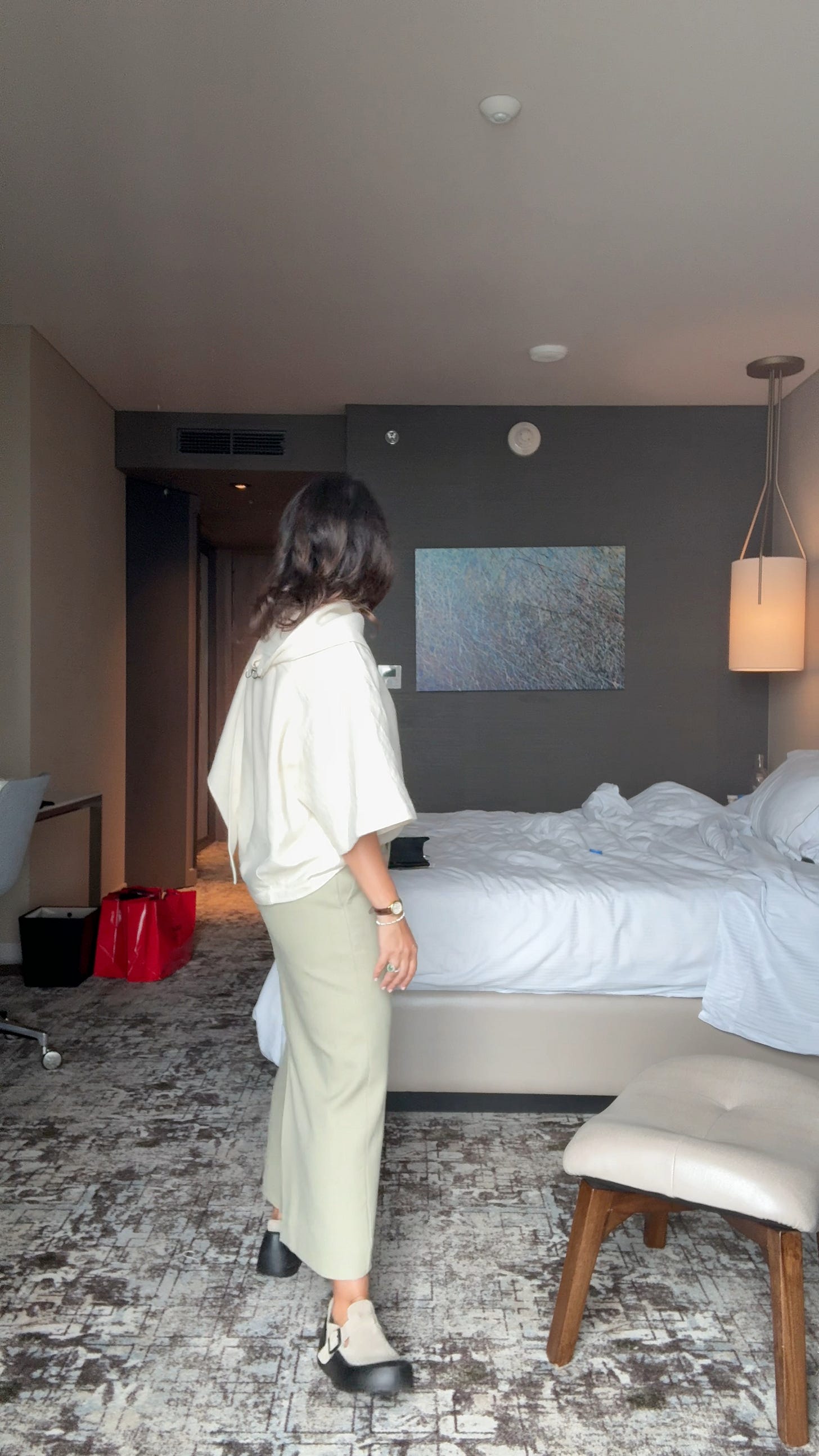



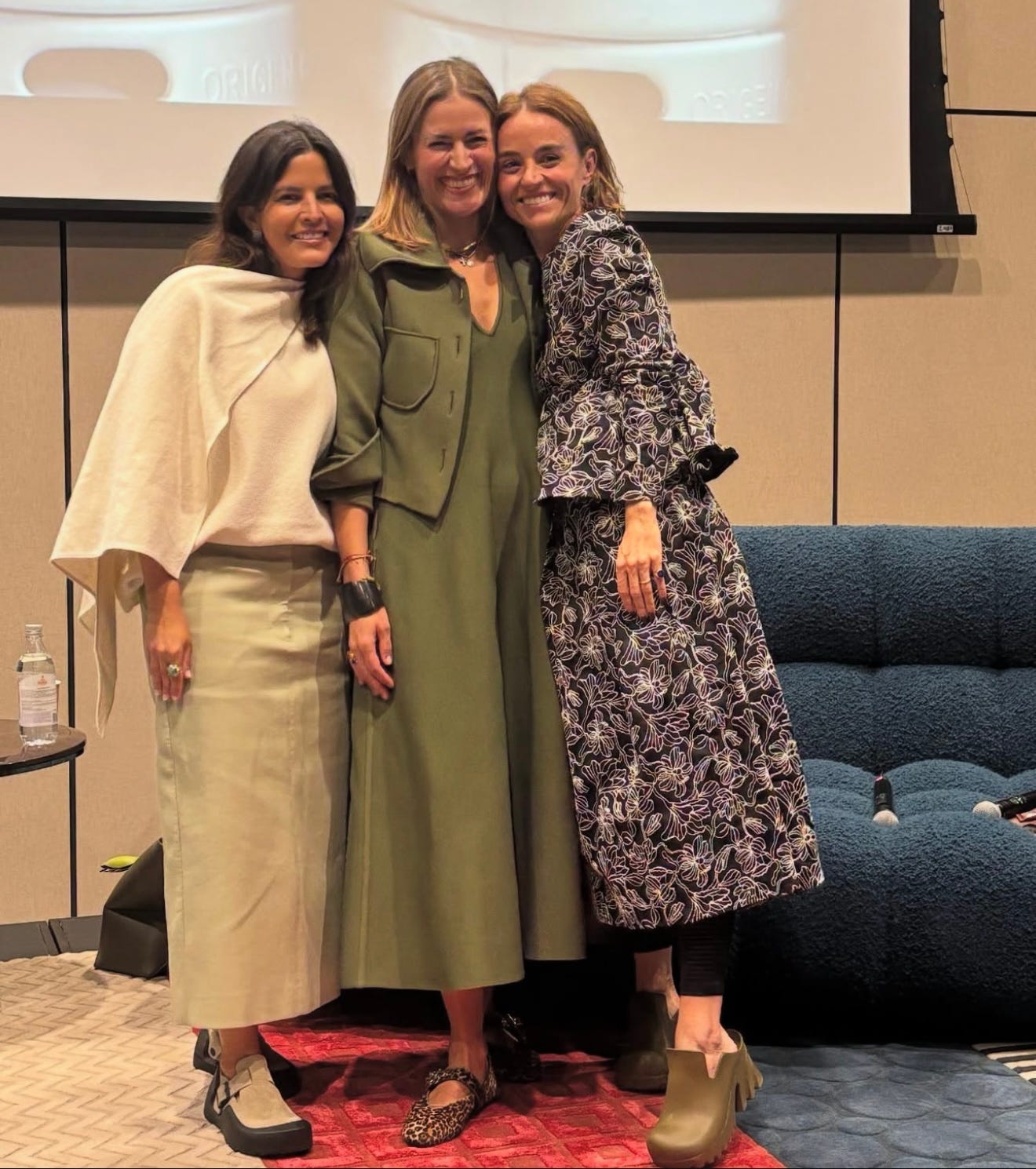
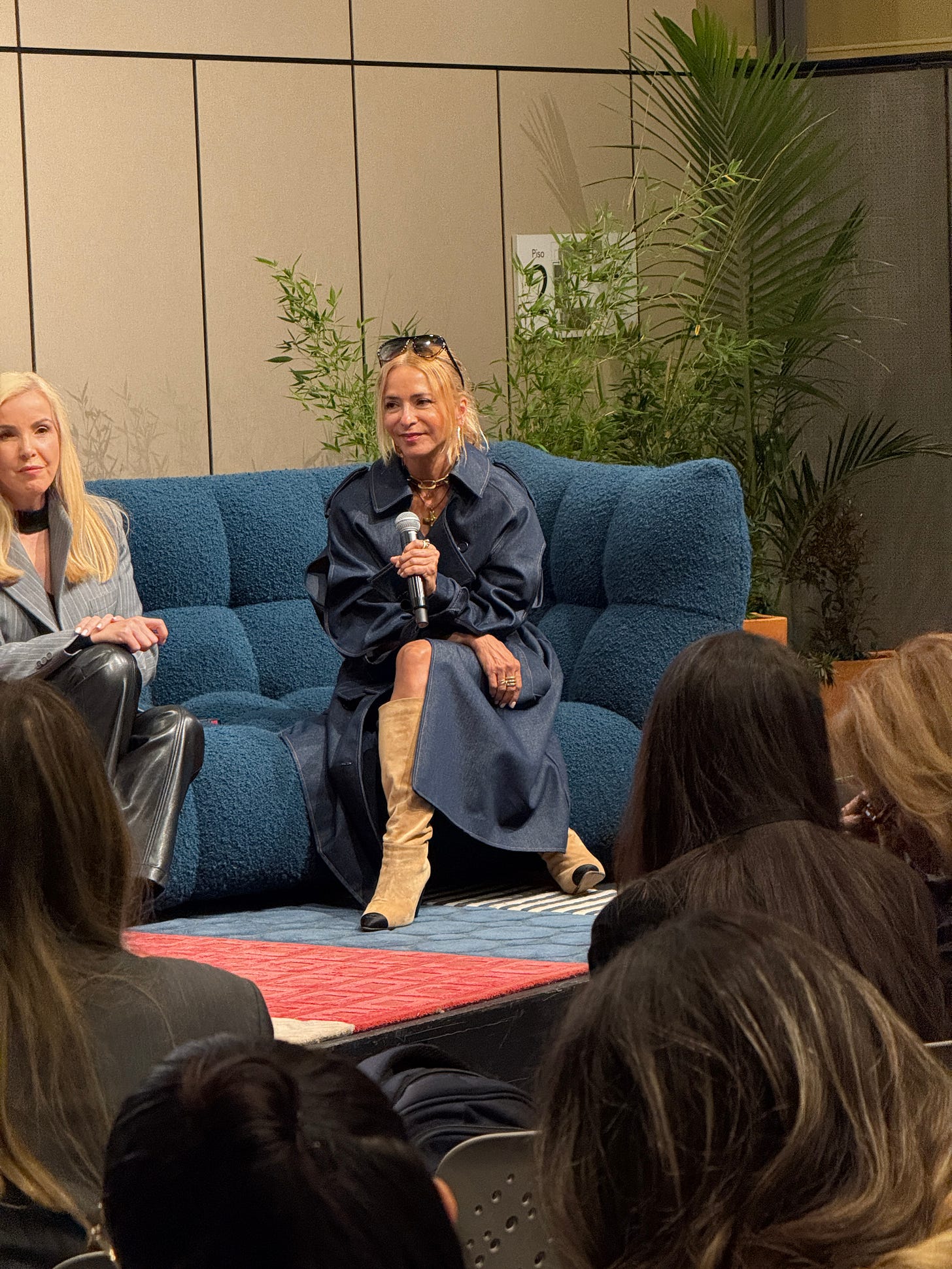



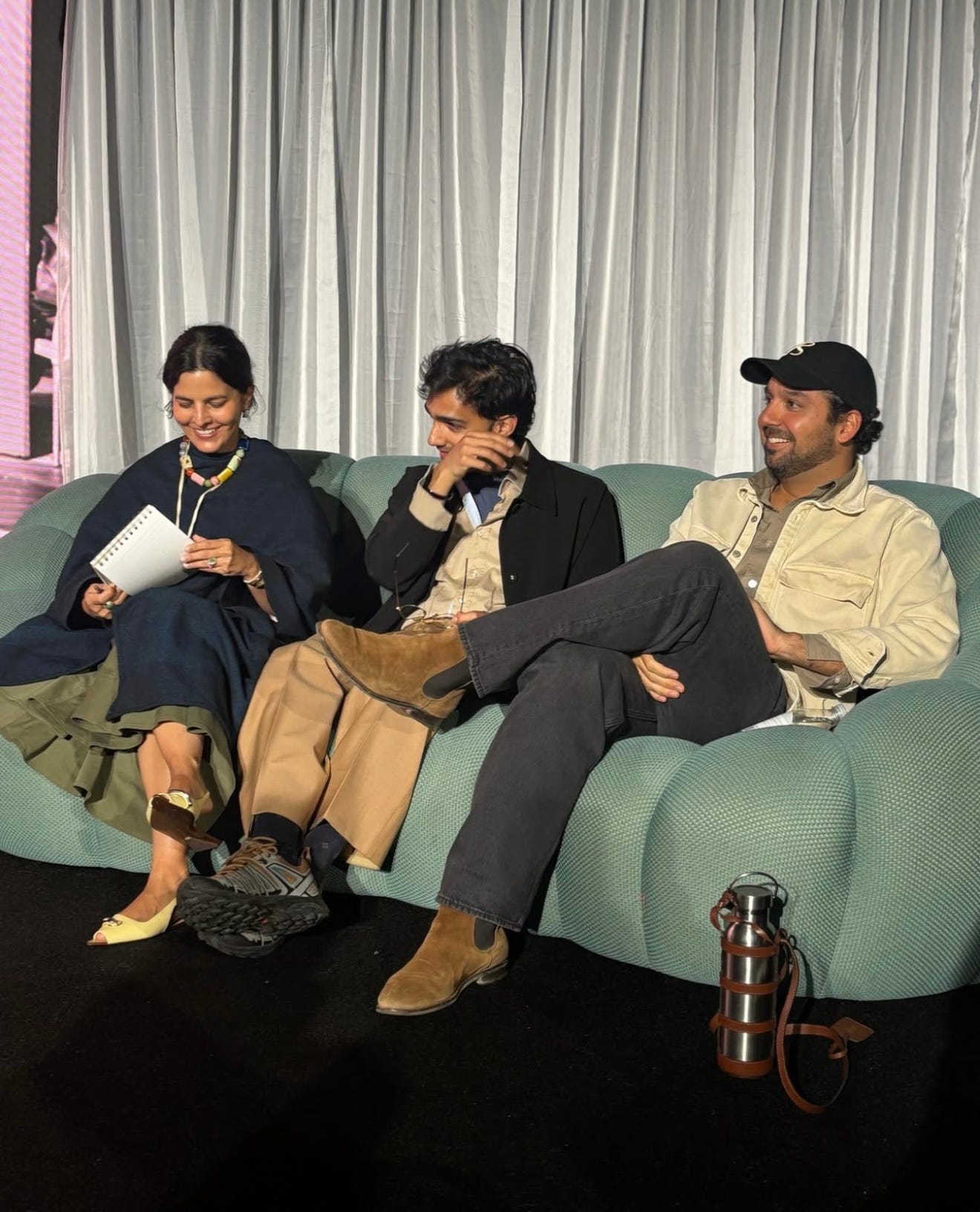


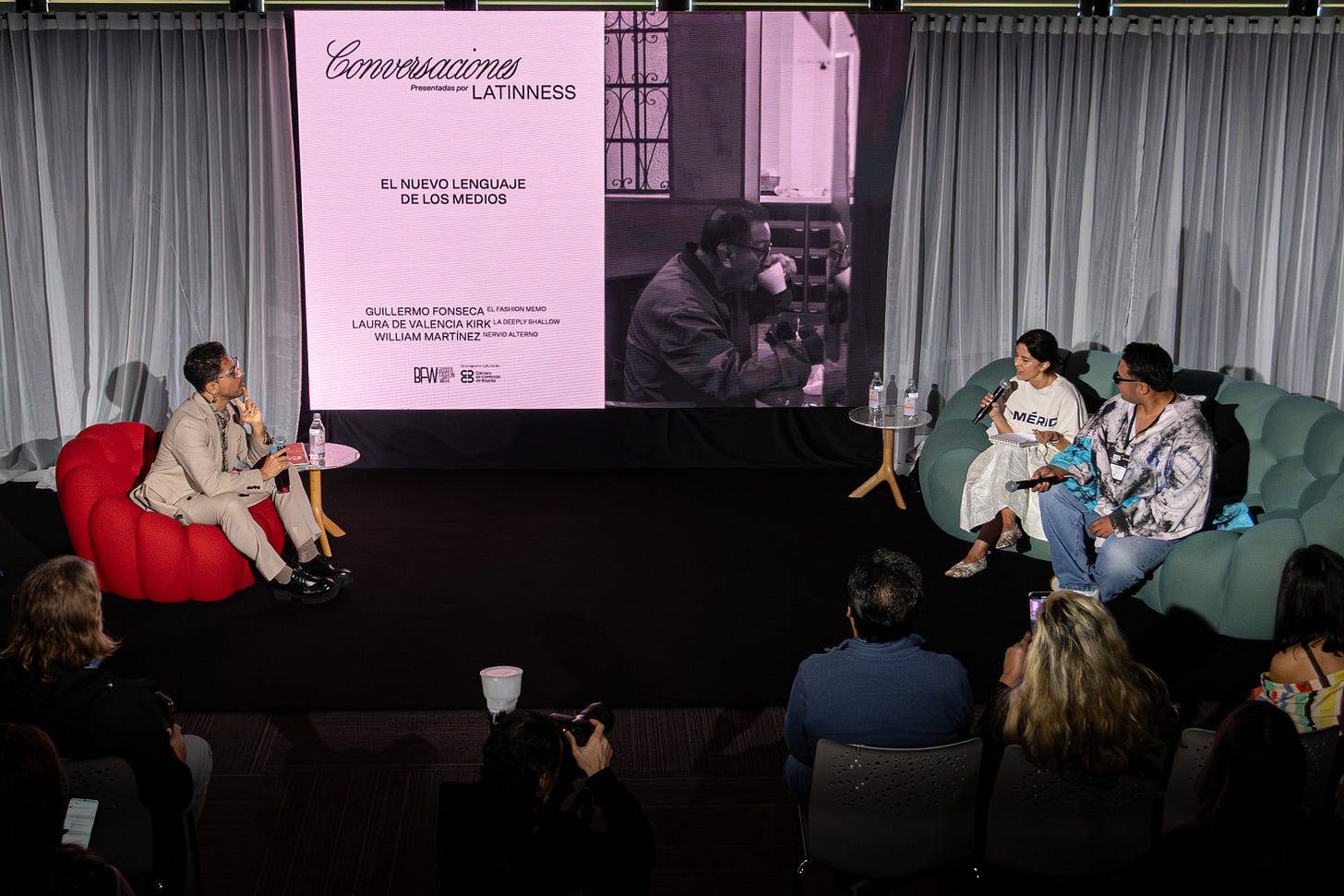
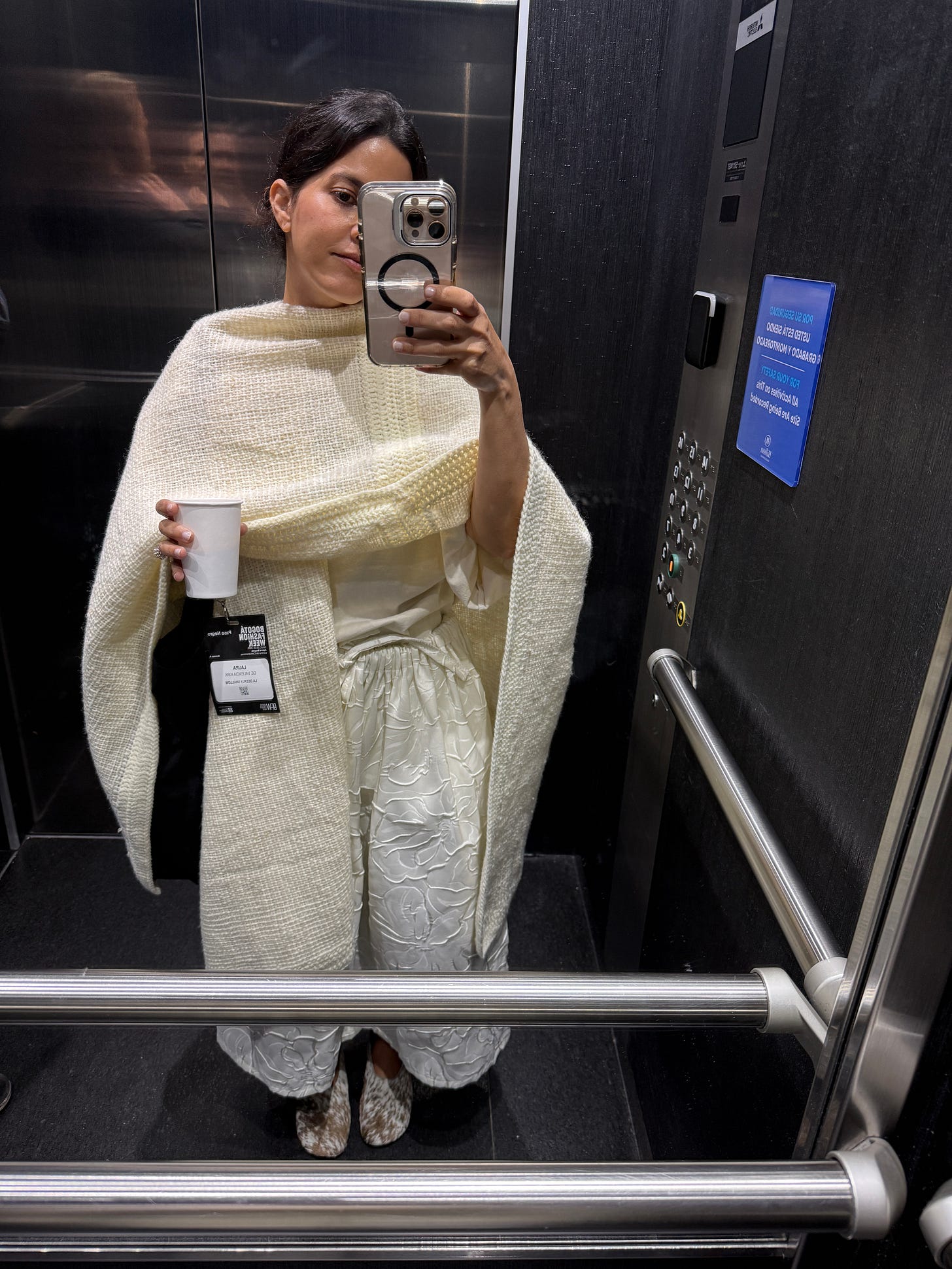
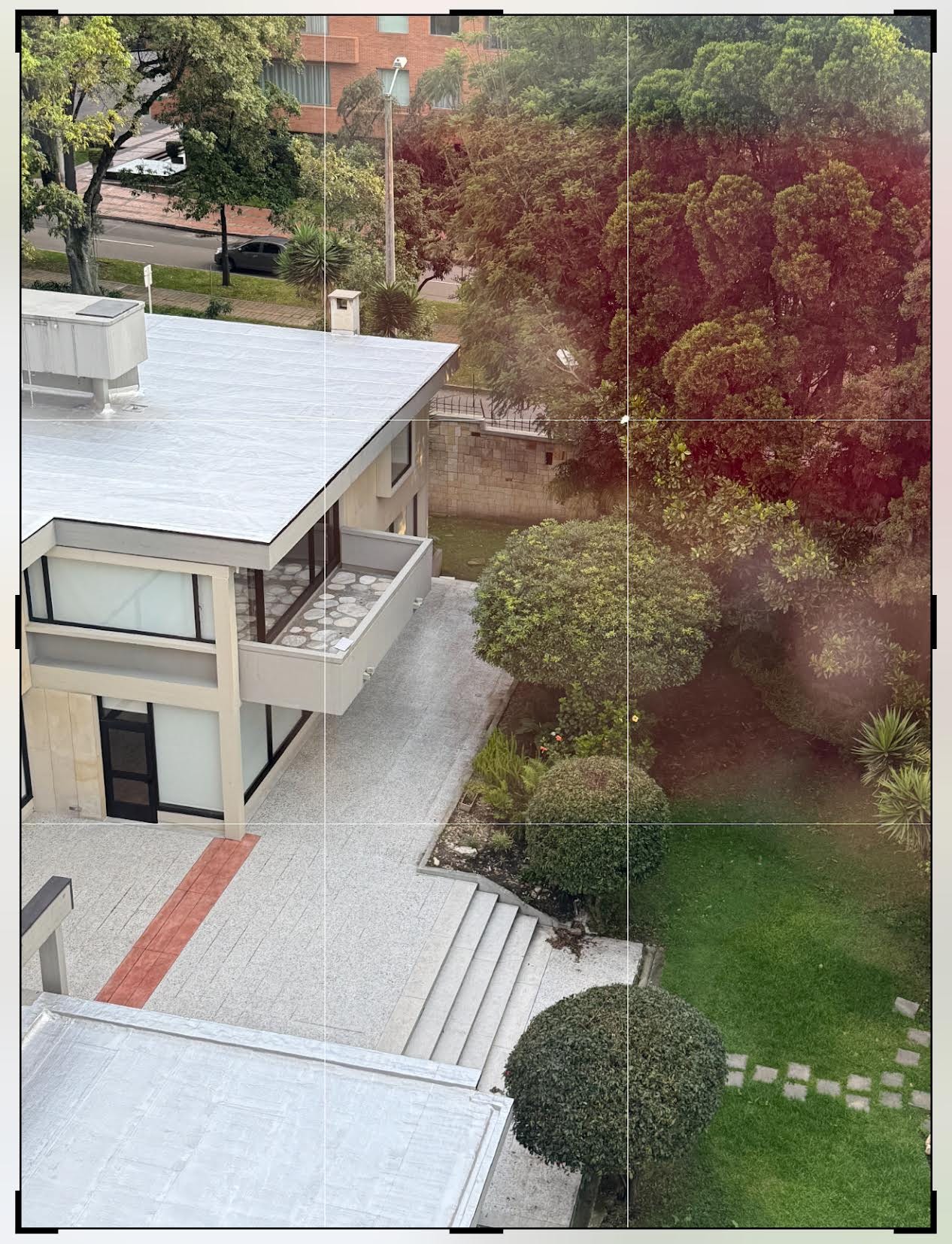
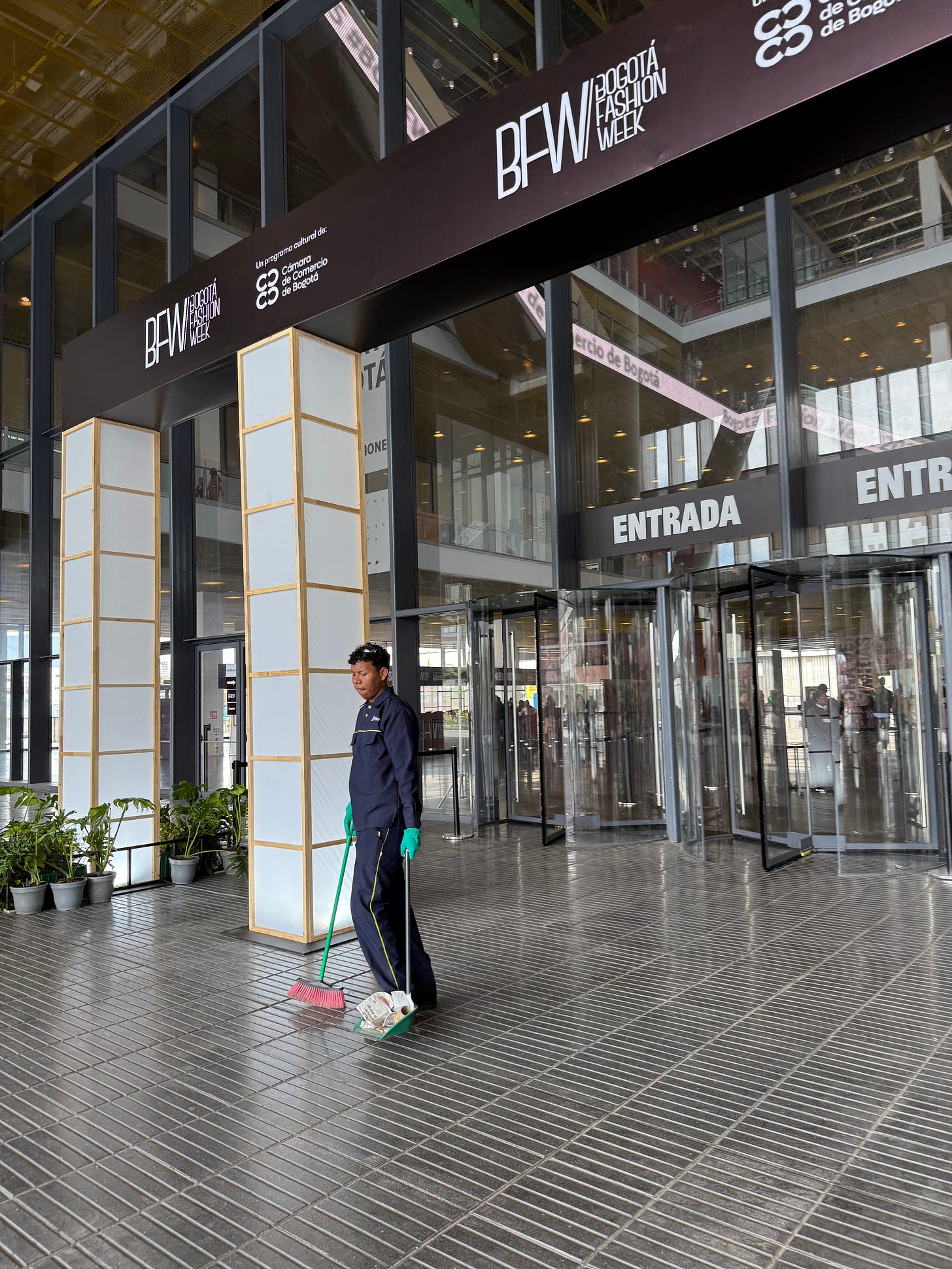
This was delightful! Thank you for sharing a taste of Bogota with us ❤️
Every time….you just write so beautifully. I love how you capture the moment. Thank you for doing what you do.